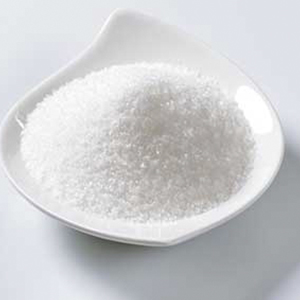
News
Nov . 10, 2024 23:29 Back to list
Top Manufacturers of Chelated Iron Fertilizers for Optimal Plant Growth
Understanding Chelated Iron in Fertilizers A Guide for Manufacturers and Consumers
In the world of agriculture, the importance of micronutrients cannot be overstated. Among these micronutrients, iron plays a crucial role in plant health and development. However, the availability of iron is frequently limited in many soils, particularly in alkaline conditions where iron becomes insoluble and thus inaccessible to plants. This is where chelated iron fertilizers come into play, providing a viable solution for both manufacturers and consumers seeking to enhance crop yield and quality.
What is Chelated Iron?
Chelated iron refers to iron that has been chemically bonded to organic molecules (chelates) to form a stable complex, which facilitates the absorption of this vital nutrient by plants. This process prevents the iron from forming insoluble compounds, ensuring that it remains available for plant uptake. Chelating agents such as EDTA, EDDHA, and DTPA are commonly used in the production of chelated iron fertilizers, each offering varying degrees of effectiveness depending on soil pH and conditions.
Why Use Chelated Iron Fertilizers?
1. Enhanced Nutrient Availability The primary benefit of chelated iron fertilizers is their ability to improve the bioavailability of iron to plants. In typical soil conditions, iron can become locked up and unavailable, leading to deficiencies that affect plant growth. Chelated iron ensures that plants receive an adequate supply of this essential nutrient.
2. Prevention of Chlorosis Iron deficiency often results in chlorosis, a condition characterized by yellowing leaves due to insufficient chlorophyll production. This not only impairs photosynthesis but also weakens the plant's overall health. By administrating chelated iron, manufacturers can help farmers prevent this issue, promoting greener and healthier crops.
3. Targeted Application Manufacturers of chelated iron fertilizers can create products tailored specifically for certain crops, soil types, and environmental conditions. This targeted approach allows for precise nutrient management, maximizing efficacy while minimizing waste.
4. Compatibility with Other Nutrients Chelated iron fertilizers can be used in conjunction with other micronutrient fertilizers. This compatibility ensures that plants receive a well-rounded nutrient supply, fostering better growth and productivity.
fertilizer with chelated iron manufacturer

Manufacturing Process of Chelated Iron Fertilizers
The production of chelated iron fertilizers involves several critical steps
1. Selection of Raw Materials Quality raw materials, including iron sources (ferrous sulfate, iron oxide) and suitable chelating agents, must be selected to ensure that the final product meets desired specifications.
2. Chelation Reaction The selected materials undergo a chelation reaction, often requiring specific conditions such as controlled pH and temperature. This process binds iron ions to the chelating agent, forming a stable complex.
3. Formulation and Blending Once chelation is complete, the product is formulated and blended with other fertilizers or additives as necessary. This step allows manufacturers to create products that meet specific agronomic needs.
4. Quality Control Rigorous testing is conducted to ensure that the chelated iron fertilizer meets agronomic standards for purity, potency, and solubility.
5. Packaging and Distribution Finally, the product is packaged for distribution, ensuring it reaches end-users in optimal condition.
Conclusion
As the demand for efficient and sustainable agricultural practices continues to rise, chelated iron fertilizers stand out as an effective solution to combat iron deficiency in crops. For manufacturers, understanding the nuances of chelated iron can lead to the development of superior products that meet the needs of modern agriculture. Meanwhile, consumers can benefit from knowledgeable insights into the advantages of using chelated iron fertilizers, paving the way for healthier crops and increased agricultural productivity. In a rapidly evolving agricultural landscape, the importance of micronutrients, especially chelated iron, will only continue to grow, underscoring the need for quality manufacturing and informed application in the field.
-
Polyaspartic Acid Salts in Agricultural Fertilizers: A Sustainable Solution
NewsJul.21,2025
-
OEM Chelating Agent Preservative Supplier & Manufacturer High-Quality Customized Solutions
NewsJul.08,2025
-
OEM Potassium Chelating Agent Manufacturer - Custom Potassium Oxalate & Citrate Solutions
NewsJul.08,2025
-
OEM Pentasodium DTPA Chelating Agent Supplier & Manufacturer High Purity & Cost-Effective Solutions
NewsJul.08,2025
-
High-Efficiency Chelated Trace Elements Fertilizer Bulk Supplier & Manufacturer Quotes
NewsJul.07,2025
-
High Quality K Formation for a Chelating Agent – Reliable Manufacturer & Supplier
NewsJul.07,2025
